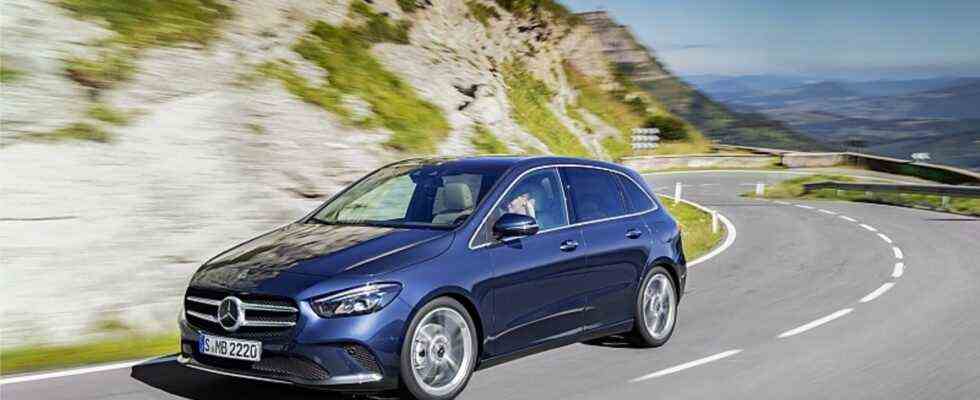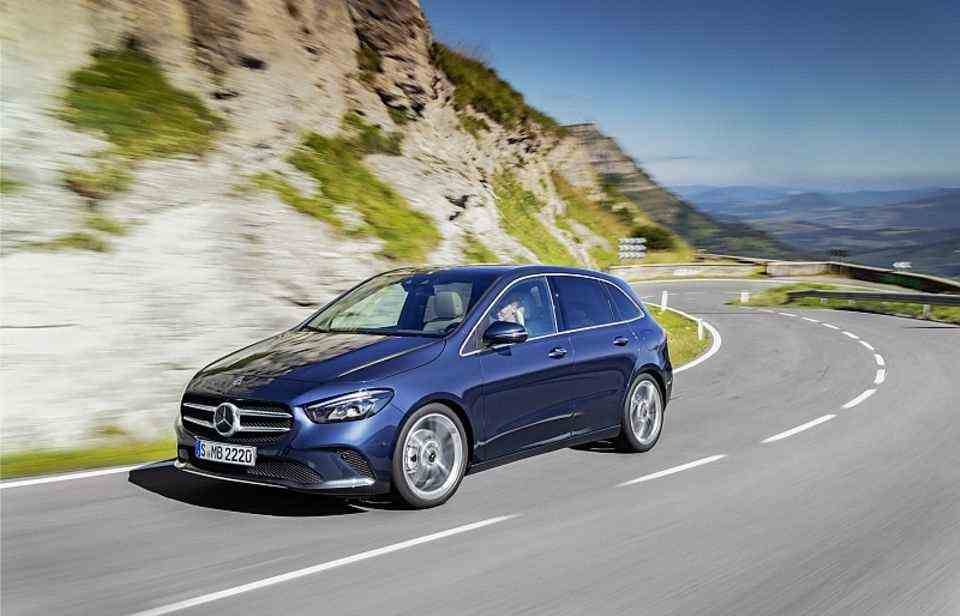TÜV Report 2022
The star shines
Mercedes B-Class
© press-inform – the press office
The TÜV Report 2022 becomes a lap of honor for Mercedes. The vehicles of the Swabian car manufacturer prove to be defective dwarfs. Things look different for Renault and Dacia, which can be found comparatively often in the table basement.
The TÜV report 2022 is firmly in Swabian hands. In the competition for the overall reliability winner, the competitors are grappling with the Mercedes GLC for the third time in a row. The rate of significant defects in SUVs is only 1.5 percent in vehicles that are two to three years old. Second place also went to Stuttgart-Untertürkheim: The Mercedes B-Class (1.9 percent) relegated the VW T-Roc (2.0 percent) to third place. Old friends also take first place in the other categories. In the four- to five-year-old automobiles, the Audi Q2 (defect rate 2.1 percent) is ahead of the Porsche 911 (2.9 percent) and the Mazda CX-3 (3.5 percent). Among the six to seven year old vehicles, the Porsche 911 (3.3 percent) is number one, followed by the Golf Sportsvan (5.5 percent) and the Suzuki SX4 (6.1 percent).
While with the older cars (up to nine years) the Audi TT shows the field the taillights with a defect rate of 7.7 percent. Behind them are the Mercedes B-Class with 8.1 percent and the Mercedes SLK with 8.6 percent. The Ingolstadt roadster also holds the top among vehicles up to eleven years old with 12.5 percent and relegates the BMW X1 (15.0 percent) and the Audi A1 (16.1 percent) to places. In the vehicle segments, the premium manufacturers, especially Mercedes again, present a strong quality image: In the compact class, the Mercedes A-class wins (2.5 percent), in the middle class the C-class (2.5 percent) and the Mercedes B- Great (1.9 percent) for the vans. In the case of small cars, the Audi A1 (2.9 percent) secures its place in the sun with the deficient dwarfs and with the Opel Karl (3.4 percent), a volume manufacturer in the mini class breaks into the phalanx of luxury car manufacturers.
And the other side of the coin? Which cars are in the table basement for the TÜV report 2022? Among the three-year-olds, the Dacia Logan won the “Red Lantern” with a defect rate of 11.6 percent, followed by the brother brand Dacia Duster (11.4 percent) and the Renault Kangoo (9.2 percent). The fact that German premium manufacturers are also afflicted by the devil of defects can be seen in the cars that are no more than five years old. The BMW 5/6 Series has a defect rate of 16.8 percent, which equates to first place in the minus table. The VW Sharan scores only marginally better with 16.4 percent, followed by the Dacia Dokker (16.0 percent).
In the case of cars up to seven years old, the Fiat Punto (23.3 percent) comes off worst. The Renault Kangoo and the Dacia Dokker are only slightly more reliable with a defect rate of 22.1 percent and 21.7 percent respectively. The figures are already significant for the nine-year-old vehicles, in which the Renault Kangoo leads the negative rating with 31.8 percent, followed by the Fiat Panda (29.6 percent) and the Dacia Logan (29.4 percent). With the eleven-year-olds, the Dacia Logan then has a defect rate of 36.8 percent. The Fiat Panda has a value of 34.0 percent and the Kia Picanto is on the list of defects with 33.7 percent.
Overall, the TÜV report paints a more positive picture than in the previous year. Exactly 17.9 percent of all vehicles failed the general inspection with “significant” or “dangerous defects”. That is two percent less than last year and less than it has been for a long time. In 2014, 24.9 percent of the vehicles did not receive the TÜV sticker. The proportion of vehicles with “minor defects” also fell by 0.5 points to 9.1 percent. That’s good news. “During the lockdowns, many vehicle owners had more time to take care of the maintenance of their cars,” says the managing director of the TÜV association, Dr. Joachim Bühler. The consequence of caring for the beloved vehicles is reflected in the TÜV report 2022:
However, the cars on German roads are getting older and older. According to the KBA Federal Motor Transport Authority, the vehicles currently have an average of 9.8 years under their belt. That is 1.5 years higher than in 2011. Currently, 42 percent of all cars registered in Germany are ten years or older. With increasing age of a vehicle, the defect rate also increases: 12.4 percent of six to seven year old vehicles, 17.5 percent of eight to nine year olds and 22.8 percent of ten to eleven year old cars fail the general inspection. The list of defects brings out old friends. The experts particularly often complain about defects in the lighting. “Broken brake lights or dazzling headlights are a serious risk for all road users, especially in the darker months of the year,” says Bühler. Another shortcoming is oil leakage and poor brakes are dangerous. This is especially true for heavier vehicles such as SUVs or crossovers.
And what about the rolling time bombs? During the study period, the TÜV experts classified 0.04 percent of the cars as “traffic unsafe”, which resulted in immediate shutdown. In absolute numbers, that is around 10,000 vehicles that were withdrawn from circulation within a year. Since 2018 there have been so-called dangerous defects in the main inspection. These include worn brake discs, badly damaged tires or non-working brake lights. If an examiner finds such a malus, a follow-up examination must be carried out within one month. In the TÜV Report 2022, 0.4 percent or around 100,000 automobiles are affected.


